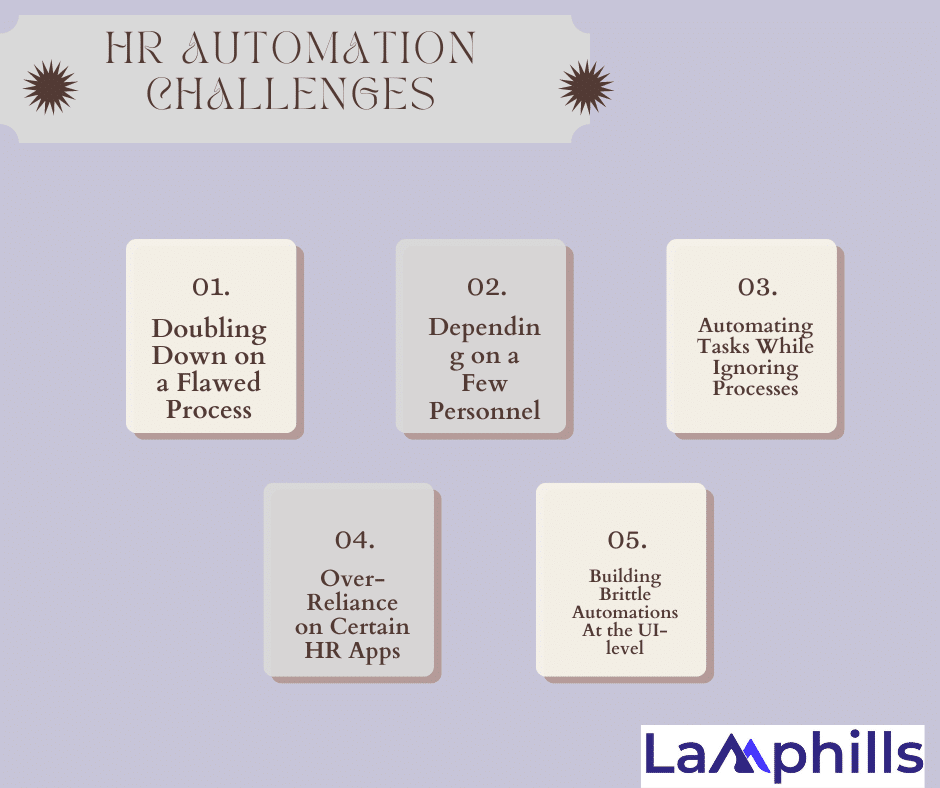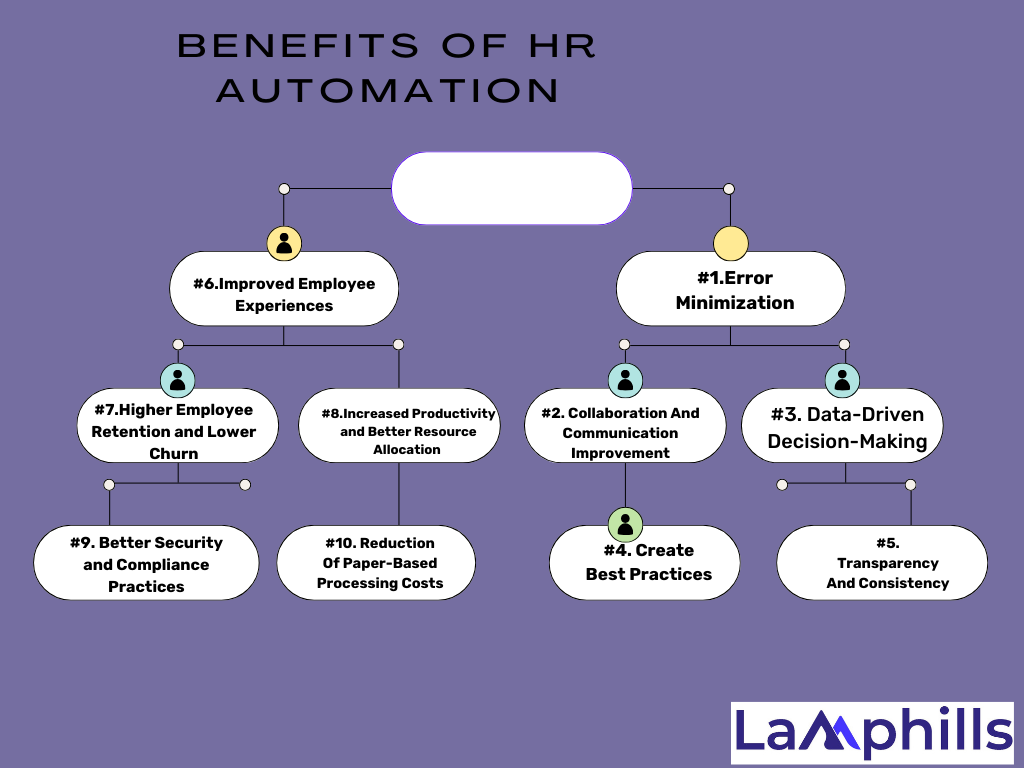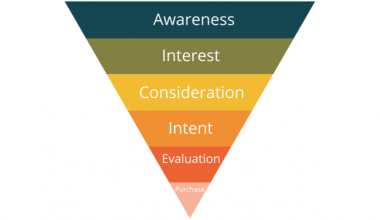There is no doubt that when an organization or corporation is mentioned, the importance of human resource management cannot be overstated. Having worked with a variety of firms, most of which include HR departments, I can state that HR management is a critical component of any business, which is why so many HR departments are working relentlessly to develop better and more efficient ways to manage human resources.
It is critical to create better ways because of the crucial responsibilities they play in a firm. From employee recruitment (hiring and firing) to training and development, recording vacation and sick days, and ensuring employee well-being within the firm, all human resource-related actions are performed. In search of more efficient ways of managing people’s resources, HR automation has been discovered. Based on the advances being made, I am confident that HR automation will soon dominate HR departments. As a result, I’ve compiled a list of facts you should know regarding HR automation based on my experience.
Key Takeaways
- HR automation is a powerful tool that can transform the way HR functions operate, delivering significant improvements in efficiency, accuracy, and employee satisfaction.
- Choosing the appropriate HR automation tool is a pivotal decision that impacts the overall success of the automation initiative. It’s essential to select a tool that aligns with your organization’s specific needs, budget constraints, and future growth plans.
- The right HR automation tool should be customizable to fit the unique requirements of your organization. It should offer essential features that cater to your core HR processes, whether it’s payroll, recruitment, performance management, or employee engagement.
- For HR automation to be effective, it must integrate smoothly with existing HR systems. This includes ensuring compatibility with HR Information Systems (HRIS), payroll systems, and other critical HR software.
- Training and skill development are vital components of successful HR automation. To fully realize the benefits of automation, HR staff need to be equipped with the necessary skills to use and manage the new tools effectively.
What is HR automation?

Human resources automation (HR automation) is the use of software to digitize and automate repetitive and time-consuming operations such as employee onboarding, payroll, timekeeping, and benefits administration. This allows HR professionals to focus on more strategic duties that are more beneficial to the firm. It also increases productivity and security while lowering the possibility of human error.
HR automation has emerged as a result of the time and physical paperwork required in day-to-day HR activities. If HR experts on your team spend more time on administrative tasks than applying their important expertise in other areas of the business, it’s time to find a new method of working.
However, switching from a manual approach to HR automation requires a certain level of skill and training in using the technology to be effective. But the benefits of HR automation for all your employees far outweigh the time, energy, and money you’ll invest in getting there.
Best HR Automation Software

What should you look for in an HR automation tool? There are several automated HR systems available on the market today. To check whether one is in tune with your HR processes, you need to cross-check the list of features this automated HR software offers. Here is a list of six features every HR automation software must have:
- Actionable Insights
- Omni-Chanbenefity HR process, anywhere, at any time, on any device
- Quick Integration
- Risk Mitigation
- Automated Alerts
- Dynamic Workflow
Here are some popular HR automation tools that you may want to consider.
#1. Built for Teams
Built for Teams is a leave management software that utilizes shareable calendars to track attendance, time-off requests, sick leave, and other paid and unpaid leaves.
#2. Bamboo HR
Bamboo HR is a platform built for data entry, data tracking, and the HR teams’ data information needs, payroll, management, and accounting functions. It allows users to store everything easily in one place, as well as create reports to gain valuable insights.
#3. WorkBright
WorkBright offers fully remote onboarding for any organization. You can manage new hire paperwork and employee files from anywhere, and you can send automatic reminders throughout the onboarding process once an employee has accepted your offer.
#4. Fuse Workforce Management
The Fuse Workforce Management platform brings together time and attendance management, HR management, and payroll into one software solution. It’s a powerful standalone tool that will give you an accurate view of your workforce, as well as improve decision-making, planning, and efficiency across the organization.
#5. WebHR
WebHR acts as a bridge between HR and IT. Features include eTrack, a shift scheduler, expense claims, and discussions. It also helps organize recruitment, attendance, leaves, and holidays, and comes with a mobile app and support.
How to Implement HR Automation
A systematic approach to HR automation often includes these steps.
#1. Survey and Document Manual Processes Primed for Automation
First, the HR team determines whether manual administrative duties and HR processes may be automated. They can look for difficult and repetitive procedures in recruitment, onboarding, people management, time and attendance tracking, benefits administration, payroll processing, and other areas. Robotic process automation (RPA) can help offload repetitive jobs.
#2: Select HR Automation Tools
The next step is to conduct research. The reviewing team can compare HR automation software solutions before deciding on a purchase. Alternatively, approach business leadership for budget approval. The HR automation solutions chosen may include specialized HR software for specific functions and use cases. To combine human capital management (HCM) systems that cover a wide range of HR services, such as automated staff recruiting, training, and management planning.
#3. Integrate Automation Tools with Existing Systems
After choosing an automation tool, the team may implement the new software and integrate it with current HR systems. To ensure flawless data flow and synchronization, consider using a Human Resources Information System (HRIS), payroll system, benefits enrollment system, or application tracking system.
#4. Gather and Maintain Employee Information
Once the new automated solution is in place, the HR team will no longer be responsible for manual data entry. As a result, they may now automatically gather and retain important employee data, such as personal information, performance metrics, attendance records, and training histories. To do this effectively, HR teams must ensure that this data is compliant, ethical, and private, as it will serve as the foundation for future predictive analytics, reporting, and optimization decisions.
#5. Standardize the Process
After an automation is completed, the team can examine it to ensure that the new tool or process automation provides the greatest value to employees. An audit of the implemented automation will find opportunities for expansion, simplification, and other enhancements.
#6: Analyze Data, Optimize, and Report
When the data begins to flow, insights follow quickly. Automation analytics could be utilized to make data-driven judgments and recommendations to corporate management. HR workers can use analytics to monitor employee performance and assess the success of HR programs and policies. Identify trends with significant business ramifications, which can then be brought to the C-suite’s attention for investment.
#7. Maintain and Update Regularly
HR automation requires regular maintenance, updates, and system checks to ensure data accuracy, security, and optimal performance. This may involve monitoring data integrations, applying management software patches, and addressing any issues that arise.
When to Implement HR Automation

Given the quick and continuous advancements in technology, particularly AI, determining when to transition to HR automation or a more capable system can be tough. Other modifications or new IT solutions may necessitate extensive planning for integration. Keeping all of this in mind, below are some potential triggers for starting the transition to HR automation or more advanced HR automation.
#1. HR is Underperforming
Once HR’s most important functions are agreed upon and understood, how well is the team delivering? Delays or inefficiencies in hiring, onboarding, reporting, or payroll processing would be red flags that a change is needed.
#2. Fast Organization Growth
Periods of increased onboarding might overwhelm an HR department if it lacks adequate resources. Automating manual operations allows HR teams to focus more on recruitment, training, and employee retention initiatives. If new personnel are arriving quicker than HR can handle, too many requisitions are reducing organizational effectiveness, or training is delayed,. Then HR may use HR automation to help pick up the pace.
#3. Budgets Are Stretched
When new recruiting is limited, delegating manual tasks to HR automation might help keep up with the work needs of a small staff. Keeping HR professionals involved in the people business not only helps to minimize burnout but can also help to save the available budget.
#4. Audits Are at Risk of Resulting in Fines or Non-Compliance
HR departments deal with sensitive information daily and are responsible for adhering to industry or government-defined recordkeeping requirements. Some departments may be subject to regular audits by an outside entity, which can interrupt business operations. If your company is concerned about the possibility,.
#5. Reduced HR Staffing and Budgeting Challenges
Even in a company environment where increasing HR services and delivery is critical, it can be difficult when funds and personnel resources are limited. Leveraging an automation solution to save time spent on manual operations can benefit any HR department, particularly those seeking to be productive while working with limited resources.
Practical Examples Of HR Automation Process

HR automation is about digitizing repetitive and time-consuming HR tasks to eliminate or minimize the need for manual work and human input. The HR management tasks that can be automated to some (or maximum) extent include the following activities: We’ve been talking about human resource management and processes that should be automated. But what are the processes that HR staff use? Which is their best bet? After carefully analyzing my experiences with this HR automation, I came up with process automation examples that can be easily implemented:
#1. Recruiting
- Recruiting processes include:
- Posting job ads,
- Tracking responses,
- CV screening,
- Pre-employment assessments,
- Sorting and prioritizing candidates based on set criteria,
- Automated email flows.
When you don’t automate the unproductive admin tasks from these processes, your HR staff will spend unnecessary time on them.
#2. Employee Onboarding
Employee onboarding entails collecting documents for verification, signing forms, granting recruits tool access, submitting device requests, and much more. HR automation can give a simple checklist for onboarding. This includes the ability to automate notification and approval workflows, gather e-signed forms and generate official PDF documents, quickly deliver devices to employees without the need for IT help, and much more.
Case Study: KPMG, Belgium.
KPMG did not have a pre-boarding process for new personnel, which resulted in a significant lag between signing their contract and their first day of work.
The company used an integrated and secure onboarding software solution to solve this issue. The onboarding process now starts as soon as the new employee signs the contract. New hires are automatically sent all the practical information they need to know from the app before they begin their first day.
After two years of using the HR automation app, KPMG employees rated their hiring experience a 4.45 out of 5, and their first week a 4.12.
#3. Offboarding
The offboarding process is sometimes underestimated, although it is equally important as onboarding. When done properly, offboarding protects the organization and creates a positive impression on departed employees. However, manual offboarding is time-intensive. There is a risk of losing forms or completing them incorrectly. Furthermore, there is a danger that the organization will not be adequately protected in terms of compliance and security.
HR automation software allows you to generate an offboarding checklist and:
- complete and upload documents electronically,
- schedule exit interviews,
- update personal information,
- make arrangements for the employee’s final paycheck,
- create requests for company equipment to be returned,
- remove their access to applications on a date of your choice,
- remove them from the company directory on their last day (to ensure it remains up-to-date).
#4. Access to Apps and Tools
When a new employee joins an organization, they must be allowed access to the necessary applications they require at the appropriate permission levels on the first day. This frequently results in wasted time on the first day trying to get an employee properly set up and able to access the key systems required to fulfill their duties.
HR process automation allows you to automatically grant access to new hires based on established criteria. Employees are also likely to require access to new programs and tools over time. HR automation enables any employee to request access to an app and have it approved or rejected by their management.
#5. Paid Leave Management
Manually calculating and approving vacation days can be problematic since it involves many tasks:
- Checking the employee’s leave balance
- Getting manager approval for leave requests
- Recording the leave for payroll circulation
Additionally, if this falls on one person’s shoulders, there is much room for human error. Emails get forgotten, and there’s a risk of disruption when this person is on vacation or sick leave. HR automation software offers an automated leave management process that automatically calculates all of the above.
#6. Expense Claims
Did you know that 38% of employees find filing and managing costs uninteresting, and more than one in six say they dread having to do it? Unnecessary manual chores, such as filing costs, are reducing employee pleasure at work. This has been shown to reduce their efficiency and performance. Increased employee satisfaction rates result in increased production levels, which contribute to improved firm performance.
Traditionally, employees had to submit the receipt, fill out a form with all of the information, and have it approved by management. Forms sit on people’s desks and begin to build up. They can be filled out incorrectly and misplaced. Approximately one out of every five manual expense reports contains inaccurate information.
HR automation enables you to digitize the cost process. Employees can upload a receipt photo from their phone, and expense management software will immediately extract the necessary information (amount, merchant, VAT, etc.). When an employee submits an error, the appropriate management is immediately notified and can accept or reject it. A controller then confirms that the information is correct and processes it with a single click. This saves staff up to 70% of processing time on average, reduces human error, and provides organizations with real-time expenditure information.
#7. Payroll
Manually calculating the time or days worked, along with sick leave or vacation days, leaves much room for error. This leads to employees being underpaid or overpaid.
HR automation can simplify the process by tracking and calculating everything automatically, simplifying payments, and making data much easier to find if needed for a compliance audit or something else.
Case Study: Fuel Cell Energy in Connecticut.
Sandi Mauro, the HR director, did what she had always done with her small team. She produced a set of Excel files with workers’ compensation numbers from management and forwarded them to payroll for processing. However, once the paycheck was done, the payroll manager suspected something was incorrect. After investigating, Mauro discovered that one of the spreadsheets had been wrongly categorized, which meant that every employee in the company (600 individuals) was assigned to receive someone else’s income.
FuelCell EneFuel Cellkly opted to invest in HR automation software to reduce human error, save time, and provide employees with greater information about how their compensation is determined. Error. Compensation planning used to take a whole month to complete. On the contrary, it takes a week and is error-free with the new system.
#8. Tax Filing
Tax regulations vary by level (local, state, national, and international). These are determined by the size of the organization and the location of its operations. This means that filing taxes can be difficult for your HR department, especially when laws are constantly updated and amended.
Automating payroll taxes and following applicable rules guarantees that employees and contractors receive and complete the appropriate forms. It also includes a digital file that is easily accessible in the event of an audit. HR tax software accelerates the tax filing procedure and reduces stress.
#9. Employee Benefits
Many firms rely on a benefits management agency or a professional employer organization (PEO) to administer benefits such as health care, retirement pensions, workers compensation, and other benefits.
The difficulty is that most employees have little to no knowledge of the various sorts of benefits offered to them during their jobs. Automation software can keep track of all employees’ situations and show them their benefits, even if their circumstances alter. This is an example of employee self-service.
Case Study: Grolsch.
The more employees an organization has, the harder it is to keep track of each individual and their changes and preferences.
This led to beer company Grolsch investing in an automated HR system called “My Benefits.”
The system displays every employee’s situation and benefits whenever they record any changes. The result is that all their employees now have a much better insight into the benefits available to them.
A satisfaction survey showed increased contentment from a 6.8 (out of 10) with the old, paper-driven system to an 8.2 with My Benefits.
#10. Employee Performance Tracking
Automating employee performance records means the company has accessible data to determine raises, bonuses, disciplinary action, or termination. HR can track these performance records and give managers access to add notes, prepare for performance reviews, and ensure objectives are met.
Automating performance tracking streamlines the process, ensures it’s bias-free, enables accurate decision-making, and provides a great reference point for both managers and employees.
CASE STUDY: Metropolitan Utilities District (M.U.D.)
M.U.D. used to take a highly traditional approach to employee performance reviews. It is a simple Word document with a few words modified each year, which is printed and sent to staff. Typically, the paper specified only five goals that employees were expected to meet over the year. If they succeeded, they received their bonus; but, even if they did not, they were frequently given one.
The paper system has several drawbacks. Only around 70% of employees received a review, and others reported not having one in ten years. There was no clear means to track progress, and the quality of work decreased as a result.
The company reached a point where they wanted to start tying pay to performance but realized they were ill-equipped. Since implementing HR automation, every employee for the first year ever (in 102 years) had a performance review. Employees and managers can now communicate more easily about goals, and the entire process is easier for all levels of the organization.
M.U.D. saved an estimated two weeks’ worth of time by ditching paperwork for an automated system, along with many more benefits across the company.
HR Automation Challenges

Unfortunately, HR automation can also present issues. Here are just a few to keep in mind.
#1. Doubling Down on a Flawed Process
Automating a faulty process won’t fix the process itself; on the contrary, it’s likely to exacerbate the issues it’s causing.
#2. Depending on a Few Personnel
Many tools that let you implement HR automation require a certain level of technical expertise to use. Since few, if any, of your employees likely have this expertise, your organization’s ability to build and maintain HR automation at scale will naturally be compromised.
#3. Automating Tasks While Ignoring Processes
Many products on the market are also designed to automate HR-related tasks that your staff already conduct. While this has certain advantages, such as time savings and fewer human errors, it does not allow you to reimagine and modify critical aspects of the employee experience (for example, onboarding).
#4. Over-Reliance on Certain HR Apps
Having your team develop connectors and automation within HR tools, such as your HRIS, poses a few challenges. For starters, these implementations necessitate a very specific skill set that is difficult to obtain and retain. Furthermore, if your organization decides to discontinue use of that program, all of the integrations and automations you’ve created within it will be removed.
#5. Building Brittle Automation At the UI-level
Your applications’ UIs will inevitably change over time. When they do, any of the UI-based integrations and automation you’ve built can easily break—forcing your team to respond quickly.
HR Automation: Best Practices
Here are some tips and tricks that can help your team build powerful automation:
#1. Determine Your Business Goals
This can be anything from achieving a higher satisfaction rating from employee surveys to onboarding employees a certain number of days faster. With these goals in mind, you’ll be better positioned to prioritize your automations and build them more thoughtfully.
#2. Closely Monitor Each HR Automation After Pushing Into Production
While your builders likely test each automation extensively, all kinds of issues can slip through the cracks. To help your team detect and address such issues quickly, your team can monitor each automation for the first few weeks after it’s gone live.
#3. Revisit your HR Automation regularly
Your HR automation likely have room for improvement, whether that’s adding additional steps, improving the business logic at a certain step, replacing the applications that get used, etc. To pinpoint these areas of improvement, you should look over each automation on a cadence that’s feasible for your team—such as every 6 months.
Benefits Of HR Automation

Automating HR tasks can save time by freeing up HR professionals to take on more valuable or complex tasks for the organization. It can also improve their efficiency, reduce the possibilities of human error, and help strengthen the organization’s regulatory compliance posture. Why should you invest in HR automation? To answer that question, let’s have a look at some of the key benefits of HR automation.
#1. Error Minimization
Humans are prone to mistakes and by manually computing payrolls, timesheets and other manual processes will pave the way for human error. There were cases where some colleagues in the HR department came to work exhausted as a result of stress or probably other problems that are peculiar to humans, and it affected their work. With HR automation, situations like this do not occur. A machine is more efficient and can perform these tasks more quickly, reducing any form of error.
#2. Collaboration And Communication Improvement
The processes and stages that are involved in the automation process are very clear. This helps everyone understand each other’s responsibilities, which improves communication and teamwork.
#3. Data-Driven Decision-Making
Automation software can collect and track HR-relevant data across the organization, allowing decision-makers to analyze existing processes, assess their effectiveness, and determine what if any, changes are required to optimize the processes and benefit the organization.
#4. Create Best Practices
Leadership can use the collected data from automation software to run reports, measure actionable items, analyze employee experience, and find patterns within the data that might indicate opportunities or risks. This information can be used to create policies and best practices.
#5. Transparency And Consistency
Automating HR workflows might improve transparency and accountability in the HR department. For multi-location businesses, automation can create consistent HR practices and ensure that those practices are implemented equitably throughout the organization.
#6. Improved Employee Experiences
Automation makes self-service possible. Employees can log into a self-service portal to easily make changes to their benefits, submit expense reports, apply for leave, or sign up for new training courses. By allowing employees to self-manage these aspects of their employment, instead of having to rely on HR personnel or complex HR workflows (send an email, fill out a
#7. Higher Employee Retention and Lower Churn
Enhanced employee experiences directly correlate to workplace satisfaction and foster a culture where employees feel empowered to do their best. Employees who feel supported and valued are less likely to leave the organization.
#8. Increased Productivity and Better Resource Allocation
By automating simple but tedious processes, HR departments can better use their time on more complex tasks. For example, they can work closely with top leaders to create employee engagement strategies or design new training and development programs. Additionally, employees can spend less time on HR processes, such as requesting time off or choosing benefits, and focus more on the task at hand.
#9. Better Security and Compliance Practices
Some HR automation software provides tools to enhance physical security, such as automatically deactivating badge access with offboarding, as well as regulatory compliance, such as auto-sending reminder emails to staff whose credentials must be renewed soon.
#10. Reduction Of Paper-Based Processing Costs
Paper-based processing entails printing documents and then filing them away as a record. HR automation lowers the costs associated with this. It decreases the amount of storage space required and assures that records can be easily located by simply clicking a button, resulting in cost and time savings. In one of the institutions where I worked, a significant amount of space was utilized to hold paper documents, which cost a lot of money. These areas were later transformed into offices following automation.
HR Automation Trends For 2024
Let’s take a brief look at the latest HR automation trends to help you create an up-to-date automation strategy for your organization.
#1. Virtual Workforces are Here to Stay
Many major companies like Twitter, Shopify, Facebook, and Slack, have embraced and elevated working from home. This move makes sense considering 65% of workers prefer to continue working from home post-COVID.
Keeping this in mind, HR departments need to adjust to this reality and create workflows and strategies that support a fully remote or hybrid work culture.
#2. Recruitment Holds the Most Automation Potential
Recruitment can be a repetitive and time-consuming process—making it the perfect area to automate. Still, companies are currently automating only 6% of all recruitment tasks. We can expect more recruitment-related tasks to become automated over the next few years, especially with the recent advances in AI and HR tools. For instance, the recruitment process can be streamlined by utilizing LinkedIn automation tools such as Linked Helper, and this is just one of many examples.
#3. HR Departments to Modernize Faster, Backed by AI Automation Across All Levels
Human resources in the digital age are becoming increasingly demanding and complex. To keep up, companies will apply AI automation in many areas, including onboarding, training, and recruitment.
This will enable HR to anticipate inquiries and issues, deliver a more personalized approach, minimize repetitive tasks, focus more on tasks requiring a human touch, and ensure 24/7 availability through AI-powered chatbots.
#4. Online Employee Training to Develop and Enhance Skills
The main idea behind employee training is to elevate productivity among staff. With workforces going remote, it’s only time before employee training will follow suit and becomes online. Expect companies to turn to automated online learning platforms and workshops to provide employees with learning opportunities to develop and enhance their skill sets.
#5. Increase Adoption of Payroll Automation
Over the last few years, many companies have implemented payroll software to automate various processes, from sending out invoices to sending payments directly into the employee’s bank accounts. The time saved can be better spent holding meaningful one-on-one conversations and leading employees towards success. Avoiding human error when processing payments, which is costly in terms of money and time, is another significant benefit.
What are the goals of HR automation?
The primary goals of HR automation are to increase efficiency and accuracy in HR processes, improve employee experience and engagement, provide data-driven insights for strategic decision-making, reduce costs associated with manual processes, and ensure compliance with regulatory requirements.
What are some areas of HR that can be automated using HRIS?
Payroll, including paychecks, salary changes, and tasks related to employee pay.
What is robotic process automation in HR?
Robotic Process Automation (RPA) in Human Resources refers to applying software robots, or “bots,” to automate repetitive, rule-based tasks within HR operations.
What is the impact of automating HR tasks on organizational outcomes?
Automation reduces the time and effort required for routine administrative tasks, allowing HR professionals to allocate more time to strategic activities. Accuracy: Automated systems are less prone to human errors, ensuring that HR data and processes are more accurate and reliable.
Conclusion
Effectively integrating and utilizing HR automation will lessen the need for HR professionals to complete mundane, repetitive duties while also creating more efficient and accurate ways of working across the firm.
Your HR personnel can then commit more time and focus to developing a more positive people and workplace culture, as well as putting their abilities to use on a daily basis.
That is, human resource management is a vital component of all businesses. HR operations are an essential component of any business, whether they involve hiring new staff, training, or ensuring that local labor rules are followed.






